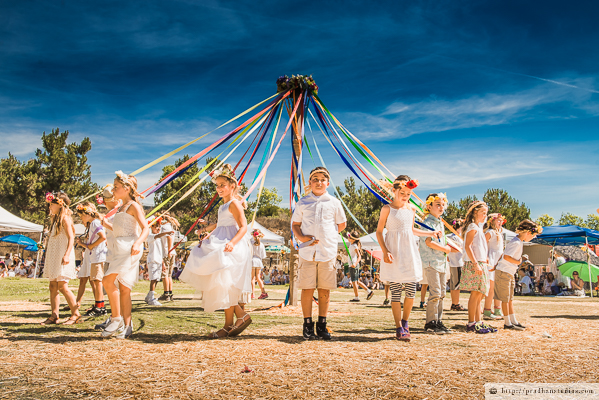Fourth graders are passing through the midst of the nine-year-old change. They still wish to revere, but their reverence must be justified. They become more self-confident as their perception of the world sharpens, but at the same time their experience of separation from their surroundings can be quite painful. The children begin to form their own personality in response to their experience of the world, consciously choosing those qualities that will go into their characters.
It is this faculty of conscious choice that the Norse myths strongly echo for the children. The gods of Asgard are portrayed as individuals with distinct personalities; the children learn from Loki the consequences of amoral cleverness and receive a contrasting image from the story of Siguna’s compassion and faithfulness. The Norse tales convey to the children the twin values of courage and sacrifice. Thor faces seemingly insurmountable odds, yet through perseverance is at last triumphant; Odin, ruler of the gods, gives his eye to drink of Mimir’s well so that he may gain the wisdom and spiritual vision to protect Asgard. As the children become more aware of the world after the nine-year-old change the many challenges of life may at times seem overwhelming. These Norse stories help to give the children the strength to face these challenges.
The fourth grade children continue their exploration of the world around them through the study of local geography. They may start by determining the “geography” of their own bodies: front-back, up-down, right-left. The children learn how to find the four points of the compass by observing the sun and stars. They study and make maps of their classroom, the school, the neighborhood, the city, and the state of California. Expeditions by foot and bus around the city help them to consciously link themselves to their surroundings.
The fourth grade curriculum repeatedly emphasizes the importance of human deeds. Thus the study of California history focuses on the men and women who played a part in creating the culture we live in. The teacher attempts to give the children a sense for the world of the first Californians, the Native Americans, including our local Miwok tribe. The children relive the coming of the Spanish explorers, the founding of the missions, and the Gold Rush, which transformed San Francisco from a sleepy little village into a boom town almost overnight. The fourth grade often embarks upon a field trip of several days to give the children a first-hand experience of the Mother Lode or other historic sites.
In a main-lesson block titled Human and Animal the fourth-grade curriculum affords the child an opportunity to study the relationships that exist between the human being and the animal kingdom. Here strength and comfort is offered the child by contrasting the one-sidedness of various animals with the well-roundedness that is human. The figure of the human form itself are examined: the hands, free to labor and create; the organ of speech, with which the human being can communicate information and express beautiful thoughts; and an erect posture that permits him or her to wrest the head free of the forces of gravity and to think thoughts that reach for the stars!
Through detailed study of the forms and habitats of animals (beavers, bats, lions, foxes, etc.) through poetry, through clay modeling, and through play-acting, the children begin to get a feeling for the fascinating assortment of skills and qualities that the animals possess. At the same time, the children begin to see the unique and responsible position they hold as human beings upon the earth.
For the fourth grade child, the world, once exhibiting a magical wholeness, is breaking up. This is the proper time for introducing fractions. By cutting up apples, baking and cutting pies and pizzas, and creating parts of a whole, the children are given a visual experience of fractions before forming mental concepts. The children learn to add, subtract, multiply, reduce and expand fractions, and to change improper fractions into mixed numbers.






